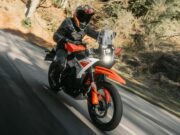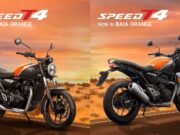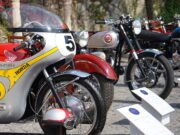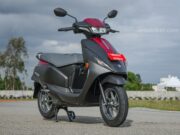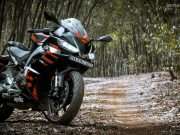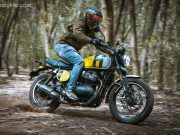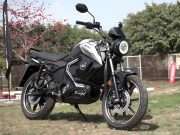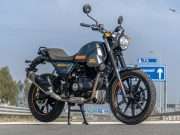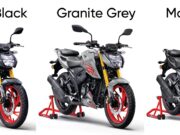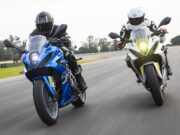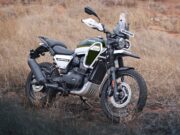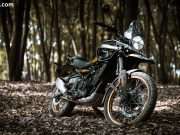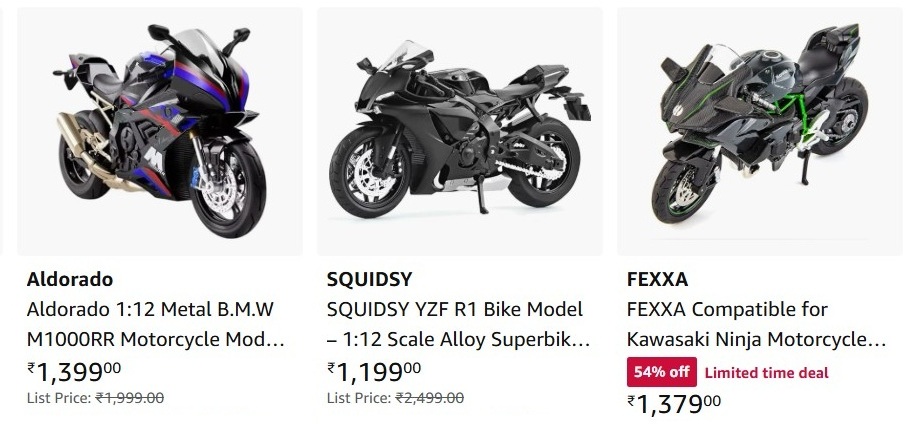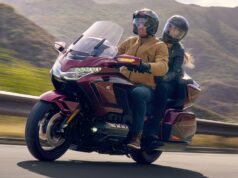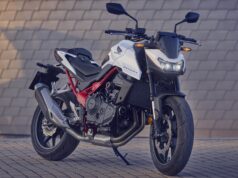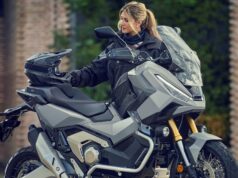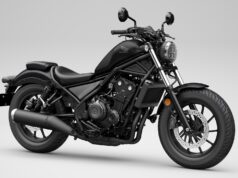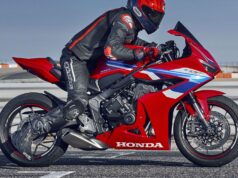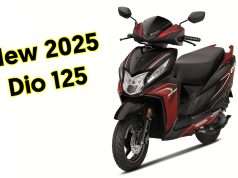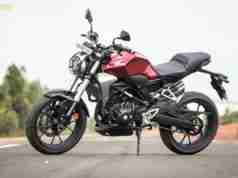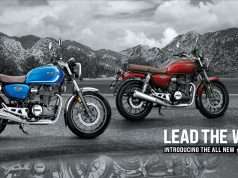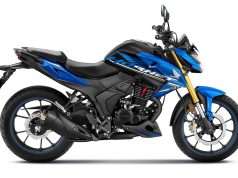1. Performance, Engine, Refinement and Noise:
The Unicorn sports a 149.1cc, 4-stroke, single cylinder, air-cooled engine derived from Honda’s CRF150F off road trail bike. Developing a maximum output of 13.3bhp @ 8000rpm and 12.8Nm @ 5500rpm, it is clear HMSI’s intended target group was the burgeoning executive commuter class. The engine cranks up at the first try but takes a moment to settle into a soft, whirring idle speed. The starter motor’s cranking sound found no favours with those around, though everyone agreed the engine sounded smooth and almost inaudible at idle. The clutch bites in nicely and the bike takes off smoothly. Shifting up from 1st to 2nd gear takes some effort, with a pronounced clang heard when the transmission makes its way through neutral. However, 2nd gear onwards, shifting up all the way to the 5th is an easy and trouble-free affair. The revs hit the limiter at 9500rpm, in each gear except the 5th, where it struggles to get past the 8.5k mark. This lends an impression of the 5th gear to be more of an overdrive to be used for the casual highway jaunts.
The vibe-free revs flow in smoothly right from the bottom-end and the power delivery feels linear all the way except at a patch somewhere between 5k and 6k. The low and mid-range torque is good enough to post a respectable time from 0 to 60kph, however, once past 90kph the little Honda struggles to get to 100 and finally runs out of juice at an indicated 110kph. On an uphill, expect that to fall as low as 90kph. With the power band extending from 4k to 8k, there is little need to downshift often. Stepping away from the motorcycle then, there are a few things this Honda does not leave you in any doubt about. You know the engine is smooth and under-stressed for reliability and fuel efficiency. The refinement of the engine is better than most vehicles available in the market today. The gearbox feels as if it can handle a bit more power flowing through it and will yet remain as unflustered as now. Refinement is typically Honda. Performance is typically HMSI.
2. Looks and Feel:
One look at the Honda Unicorn and even my 7 year old cousin will tell you it’s as far from looking racy as I looking like Katrina Kaif. Even then, all of us agreed the lines on this motorcycle haven’t aged in the 7 years she has been with us, though they certainly weren’t new either when she came out first. HMSI has clearly opted to go the safe route with a heavily under-stated approach to appeal to all ends of the scale. Unoffensive styling with a few graphic iterations here and there has kept this product going strong for so many years now. To some, the styling even appeared solid, the lasting impression from its bigger-than-it-looks tank and wider-than-it-appears rear. Astride the Unicorn, the immediate reaction is of the comfortable riding position. The handlebar-seat-foot peg geometry is clearly biased towards upright, stress-free ride for the commuter on his daily grind. Highway riders too find this setup good over long distances but the racer-boys are harder to convince.
They find crouching on the Unicorn unnatural and a bit forced than say, an RTR. The emphasis is clearly on comfort. View from the after-market RVMs from the Hero Honda CBZ Xtreme was good and wide and the tank recess was a snug fit for riders of all shapes and size except tall ones, who may find the seat a bit too low for comfort and the pegs a little too high. Plastic side panels are of decent, acceptable quality even if the joints and mountings became loose over a period of time and systematic abuse. Head-on, the motorcycle imparts a sense of smartness whereas the side gives an impression of being bulky. The rear resembles a lot to the Karizma R whereas the side panels feel bloated by design. Overall, classic, understated styling meets soft, comfortable and light riding quality.

3. Value for Money:
The Honda Unicorn is possibly the clincher for the majority in the market looking for their daily commuter. It is competitively priced and banks heavily on its parent’s name. For the “mileage kitna hai” janta, the unicorn is a prime proposition, challenged by few. Spare parts, though on the slightly expensive side compared to its main rival, last longer and thus translates into an overall saving in the long run. With a service interval of 5,000 kms and an oil change every 2,500 kms, the general maintenance is kept low. Coupled with its reliable, long lasting parts, lower maintenance inputs, average initial cost, high resale value and better than average fuel efficiency, the Honda Unicorn scores high on our Value for Money charts.
4. Accessories and Goodies:
To keep prices down, HMSI has cut corners here, and it shows glaringly. Industry standards such as an engine kill switch, pilot lamps, tripmeter, alloy wheels, digital instrument console are all absent. Moreover, essentials like side-stand, saree guard and number plates need to be purchased separately and compulsorily at the time of buying a Unicorn. That, in our opinion, is not how its done.The number of things you do get are minimal. A disc brake setup up front and an in-built helmet lock. That’s about all if you do not count the mirrors. Needless to say, we aren’t impressed here.
5. Handling and Braking:
Mono-shock. That one USP up Honda’s sleeve that seems to change the game. The rear mono-shock on the Unicorn lifts it up and beyond its peers when it comes to road handling and ride. The motorcycle rides well in all sorts of road conditions and particularly excels on bad ones. The ride is not so spongy as to leave the rider feeling like a can of jelly, nor is it so hard as to break all the bones in his body. It’s just a bit on the harder side of ideal, yet entirely acceptable by all standards. You would conclude, then, the suspension setup would render this Honda completely useless around corners. Not quite. Take her around a corner and initially you’re plain confused. There’s very little feedback from the chassis as you begin to lean into the corner and there’s no way for you to gauge just how far she would go. A little bit of skill and trust later, you’ll lean even further and find her playing the part rather easily. Keep going until the foot-pegs scrape, since they really are set a bit low and touch tarmac quite easily.
The little Honda, however, is up and ready to tackle another corner, only if you make her. That’s how the Unicorn functions. She’ll let you take the corners aggressively if you like but she’d also be letting you know that even though she’s playing the part, she isn’t particularly enjoying it. The mono-shock once again shines here, tackling the mid-corner bumps without unsettling her much. Even then, there’s a sense of disconcert that creeps in around corners; something that you acknowledge once you’ve ridden a motorcycle that’s much better at taking corners. Even though the chassis and suspension seem more than up to the role, this really isn’t a corner carver because of the commuter oriented ergonomics. That said, you can still have loads of fun with it. For a motorcycle riding this well, it really has no business going around corners the way it does.
Braking is an average affair with a disc setup up front and drum brakes at the back. The disc provides good feedback and is not prone to locking up. Stopping power from the rear is below average. In fact, the rear drums help just in effectively scraping off the momentum and leaving the job up to the discs to bring the Unicorn to a complete halt. Used simultaneously, obviously, is when the brakes work the best, at a 70:30 ratio forward to rear.

